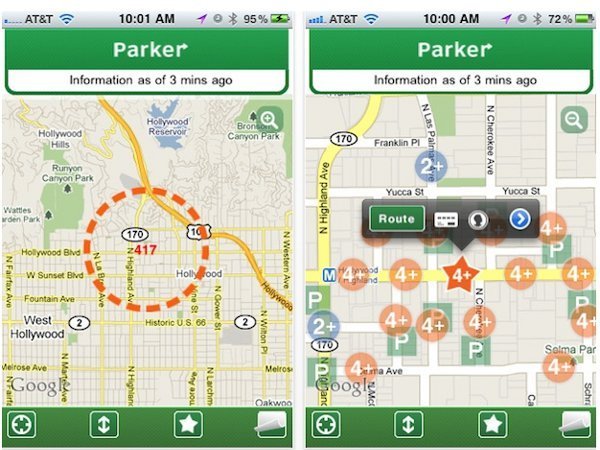
I can’t count the number of times I’ve actually shown up half an hour early for a meeting or event, but still ended up being late because I circled the city for an hour searching for a parking spot. And who wants to be the lame ass that walks in halfway through the meeting and says, “Sorry I’m late, I couldn’t find a place to park”? Because apparently everyone else found a place to park and was able to show up on time…
For that, there’s the Streetline Parker app, a mobile app that lets you locate a nearby open parking space by facility type, payment options, and more. And today, Streetline just got a big leg-up in its quest to build more Smart Cities in the form of $15 million in an oversubscribed round of Series B funding co-led by Fontinalis Partners and RockPort Capital Partners, with help from existing investor Sutter Hill Ventures.
The Parker app is part of Streetline’s overall plan to make cities more efficient through smart parking solutions. Streetline defines a smart city as one in which a network of wireless sensors and other technologies provide real-time feedback to residents regarding things like traffic patterns, parking options, power usage, and water consumption. Such a network would allow residents to be infinitely more productive and efficient by being able to locate alternate routes to work to avoid gumming up traffic, using power during non-peak hours, limiting water consumption during droughts, and more.
But the main issue that gets to most people is parking. Experts estimate that 30% of all urban traffic is caused by drivers looking for parking. So several cities throughout the U.S. have teamed up with Streetline to adopt the smart parking network, to allow motorists to quickly and efficiently locate a nearby parking spot using the Parker mobile app on their iPhone or Android device.
The app pulls data from Streetline’s patented smart-parking technology, which uses a network of ultra-low power wireless sensors located in each parking space throughout the city to determine whether it is vacant or not. The data is then transmitted back to the user’s smartphone, showing which blocks have less than two, more than two, or more than four available parking spaces, as well as blocks with “rock star” parking—the nearest parking with the most available spaces.
The wireless sensors are easily embeddable in parking spaces or they can be surface mounted, just like reflectors.
Several cities in California have already signed up for the smart parking solution, including Sausalito, Culver City, and Los Angeles, in addition to other cities across the country, such as Fort Worth, Texas; Roosevelt Island in New York City; Washington, DC; Asheville, North Carolina; New Brunswick, New Jersey; and the University of Maryland, College Park.
The company plans to use the new funds to expand and build out its smart city and smart parking solutions.
Image source: Apple.com
















